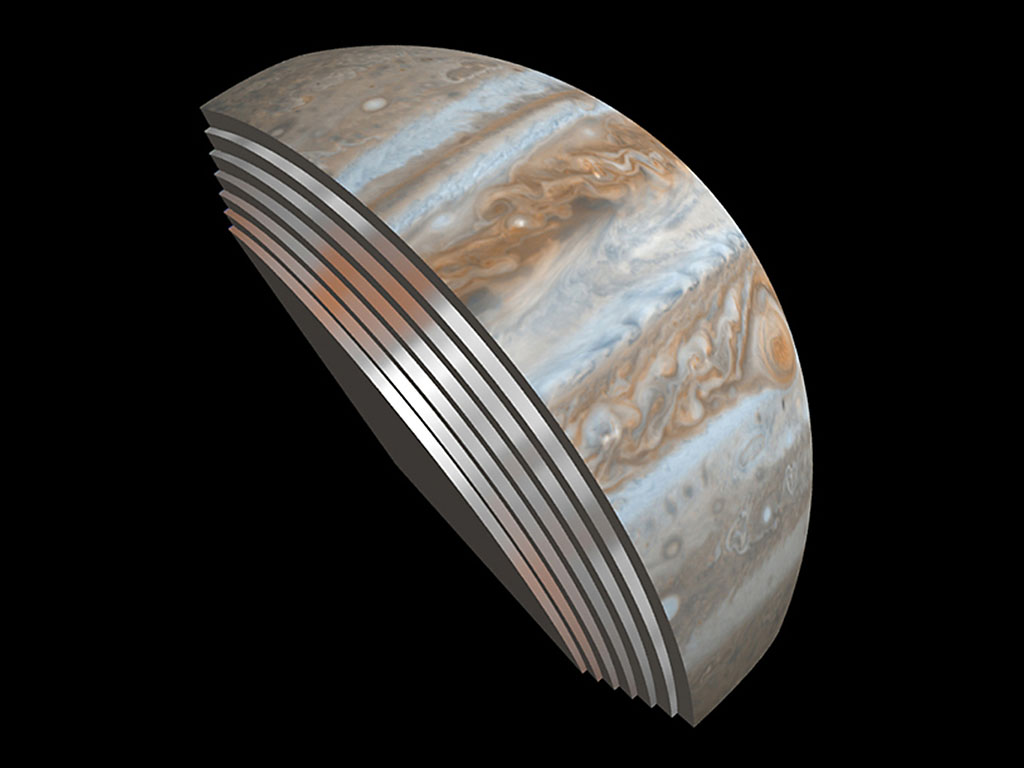This composite image depicts Jupiter’s cloud formations as seen through the eyes of Juno’s Microwave Radiometer (MWR) instrument as compared to the top layer, a Cassini Imaging Science Subsystem image of the planet. (NASA/JPL-Caltech/SwRI/GSFC)
Home This composite image depicts Jupiter’s cloud formations as seen through the eyes of Juno’s Microwave Radiometer (MWR) instrument as compared to the top layer, a Cassini Imaging Science Subsystem image of the planet. (NASA/JPL-Caltech/SwRI/GSFC)This composite image depicts Jupiter’s cloud formations as seen through the eyes of Juno’s Microwave Radiometer (MWR) instrument as compared to the top layer, a Cassini Imaging Science Subsystem image of the planet. (NASA/JPL-Caltech/SwRI/GSFC) This composite image depicts Jupiter's cloud formations as seen through the eyes of Juno's Microwave Radiometer (MWR) instrument as compared to the top layer, a Cassini Imaging Science Subsystem image of the planet. (NASA/JPL-Caltech/SwRI/GSFC)This composite image depicts Jupiter's cloud formations as seen through the eyes of Juno's Microwave Radiometer (MWR) instrument as compared to the top layer, a Cassini Imaging Science Subsystem image of the planet. (NASA/JPL-Caltech/SwRI/GSFC)
This composite image depicts Jupiter’s cloud formations as seen through the eyes of Juno’s Microwave Radiometer (MWR) instrument as compared to the top layer, a Cassini Imaging Science Subsystem image of the planet. (NASA/JPL-Caltech/SwRI/GSFC)This composite image depicts Jupiter’s cloud formations as seen through the eyes of Juno’s Microwave Radiometer (MWR) instrument as compared to the top layer, a Cassini Imaging Science Subsystem image of the planet. (NASA/JPL-Caltech/SwRI/GSFC)



